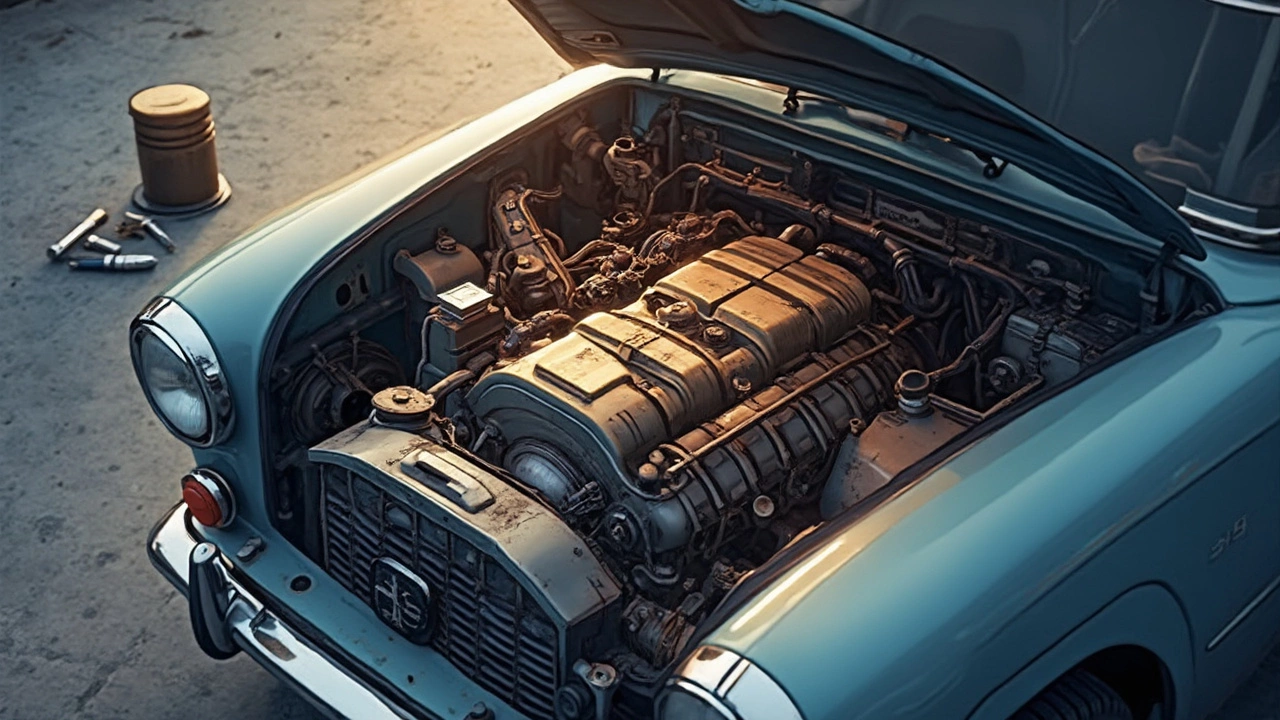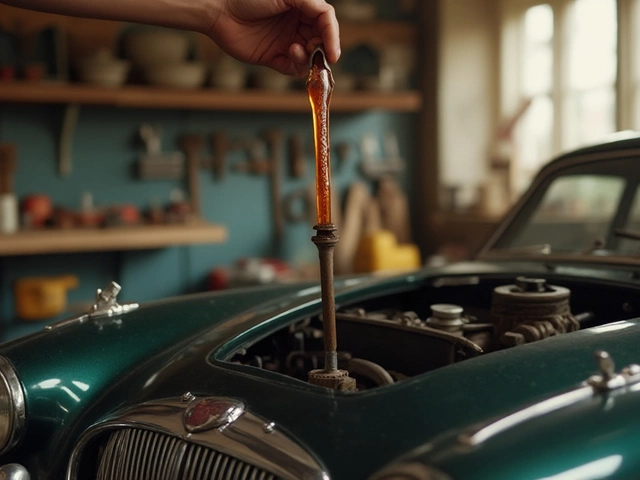Think skipping an oil check is harmless? Actually, low engine oil can mess up your car way faster than most people realize. Engine oil isn’t just another fluid—it’s what keeps all those metal parts inside from shredding each other to pieces while your car runs. Without enough oil, friction goes wild, parts overheat, and one small problem can snowball into total engine failure.
If you’ve ever seen the oil light flick on and thought, “I’ll get to it next week,” you’re not alone. But that little warning can be the difference between a quick top-up and a blown engine that costs thousands to fix. What’s even trickier? Sometimes you won’t get a warning light until the damage is already starting.
It doesn’t take much neglect. Maybe one road trip, a leaky gasket, or just forgetting that last oil change—suddenly, your engine’s running low on the one thing it needs to survive. If you want to keep your ride running smooth (and avoid frantic calls to your mechanic), knowing how bad low oil can get—and what to do about it—matters more than you might think.
- Why Engine Oil Matters
- What Happens Inside with Low Oil
- Warning Signs You Shouldn’t Ignore
- How to Prevent Low Oil Problems
Why Engine Oil Matters
Let’s get this straight: engine oil is the lifeblood of your car’s engine. Without it, your car wouldn’t make it far down the street. The oil’s job is to keep all the moving pieces inside the engine sliding over each other smoothly. When these parts rub together without enough oil, things heat up and metal starts to scrape metal—never a good mix.
Here’s what engine oil really does under the hood:
- Engine oil reduces friction so those pistons, valves, and crankshafts don’t destroy each other.
- It gets rid of heat. Engines naturally get crazy hot, and oil helps move that heat away before things melt or warp.
- The oil acts like a mini-vacuum, trapping gunk, carbon and metal flakes that build up over time.
- It keeps your engine from rusting. A thin oil layer blocks out water and other stuff that cause corrosion.
“Neglecting oil changes and ignoring oil levels can lead to irreversible engine damage much sooner than drivers expect." — Car Care Council, 2024
To really drive it home, check out this simple table showing what happens with and without enough oil:
| With Enough Oil | With Low Oil |
|---|---|
| Engine runs quietly and stays cool | Engine gets noisy and overheats fast |
| Parts last for years | Parts wear down quickly |
| Lower chance of breakdowns | High risk of costly repairs |
| Cleaner engine inside | Build-up of sludge and debris |
Oil isn’t just a suggestion—it’s essential. Even running just a little low can mean the difference between driving happily and sitting on the side of the road, wishing you’d checked your dipstick.
What Happens Inside with Low Oil
Here’s the ugly truth: when your engine oil gets low, every second your car runs is like making it sprint without shoes. Oil is supposed to coat the moving parts—the pistons, crankshaft, camshaft, bearings—so they glide instead of scrape. If there’s not enough oil, friction ramps up immediately. Once metal rubs metal, heat goes up fast. And engines don’t handle heat well.
This heat isn’t just uncomfortable—it’s deadly to engine parts. Over time, those high temps can warp parts like the cylinder head or even crack them. Oil also pulls away tiny debris and combustion byproducts. When it runs low, that gunk doesn’t get picked up, leading to sludgy build-up that can clog tiny oil passages.
- Piston Scuffing: The pistons push up and down thousands of times per minute. Low oil lets them scrape against the cylinder walls, leaving deep scratches called scoring.
- Rod Knock: The rods connecting pistons to the crankshaft can get loose, causing a knocking sound. If this starts, a full engine rebuild is usually around the corner.
- Seized Engine: If parts get too hot and weld together or jam, the whole thing locks up. That’s what mechanics call a “seized” engine—and you’ll need a new one, not just repairs.
You might be surprised how quickly damage can happen. In a test by AAA, running a four-cylinder engine just one quart low on oil increased temperatures by nearly 15%. That might not sound huge, but it’s enough to start killing seals and gaskets within hours. Here’s a quick look at what low oil does, even after a short period:
| Time Running Low on Oil | Common Damage |
|---|---|
| Minutes | Increased friction, warning lights |
| 1-2 Hours | Partially melted seals, piston scoring |
| A Few Days | Sludge build-up, bent rods, engine stalls |
| Long-Term | Complete engine failure, total seize |
Low oil doesn’t just mean your car gets a little noisy or sluggish—it’s like a snowball rolling downhill, gaining speed and doing more damage the longer you roll. Catching and fixing it early isn’t just good for your car. It’s a lifesaver for your bank account, too.

Warning Signs You Shouldn’t Ignore
Spotting low engine oil early can save you from a world of stress and repair bills. Here’s the deal—your car usually gives you little hints when something’s not right. Knowing what to watch out for keeps things from going off the rails.
- Engine oil warning light: This dashboard symbol looks like a little oil can. When it glows red, your oil level or pressure is dangerously low. Don’t ignore it—even if it flickers or only shows up on hills.
- Knocking, ticking, or tapping sounds: Noisy engines often mean there isn’t enough oil cushioning metal parts. If your ride starts sounding rough, check that dipstick ASAP.
- Burning oil smell: If you catch a whiff of something burning, especially when the engine’s hot, you might be running low or leaking oil.
- Poor performance and higher engine temps: If your car starts to feel sluggish, or you notice the temperature gauge creeping higher than normal, oil could be the culprit. Engine oil keeps things cool and running smooth.
- Dirty, dark oil on the dipstick: Clean oil should be amber or golden. If it looks sludgy or feels gritty, it’s past its prime—and your engine might not be protected.
“Even a short drive with low oil can mean big trouble, like overheating or permanent engine damage,” says Kelly Blue Book’s car maintenance expert, Matt DeLorenzo.
Worried it could sneak up on you? Check out how common low oil issues are in numbers:
| Issue | % of Drivers Affected (2024 survey) |
|---|---|
| Oil warning light ignored | 42% |
| Overheated engine due to low oil | 27% |
| Engine knocking noticed late | 18% |
| Costly engine damage | 11% |
Don’t let these red flags slide. If you notice any of them, pull over safely and check your oil level right away. Fixing a low oil issue early on means you’ll avoid most major problems—and probably save a ton of cash, too.
How to Prevent Low Oil Problems
Keeping your engine oil at a safe level isn’t hard, but it does take a bit of attention. Most major engine problems from low oil can be avoided with some basic habits and a few quick checks. Staying on top of this not only saves money but also makes your car last way longer.
- Check your engine oil once a month (or every 1,000 miles if you drive a lot). Park on level ground, let the engine cool, and use the dipstick. If it looks low or dark, it’s time for a top-up or oil change.
- Know your car’s oil change schedule. Most modern cars use synthetic oil and need changes every 7,500 to 10,000 miles, but older engines can need fresh oil every 3,000 to 5,000 miles. Your manual tells you exactly what your car needs.
- Look under your car every now and then for puddles or drips after parking. Engine oil leaks leave dark, greasy spots. Spotting a leak early can stop bigger headaches later.
- Listen for new sounds or burning smells. These can be early signs of oil trouble before warning lights ever come on.
Wondering what happens when people skip oil checks? Here’s what the Car Care Council found in their recent survey:
| Oil Problem | Percent of Drivers Affected |
|---|---|
| Skipped Oil Changes | 22% |
| Low Oil Detected During Service | 23% |
| Engine Damage from Oil Neglect | 14% |
One more tip: always use the right oil for your engine. Using the wrong grade can reduce protection and even trigger warning lights. Double-check the oil cap or your owner’s manual when in doubt.
With just a few minutes of attention every month, you’ll usually catch small problems before they become expensive repairs. Getting into the habit now makes it automatic—and saves a bunch of stress down the road.




